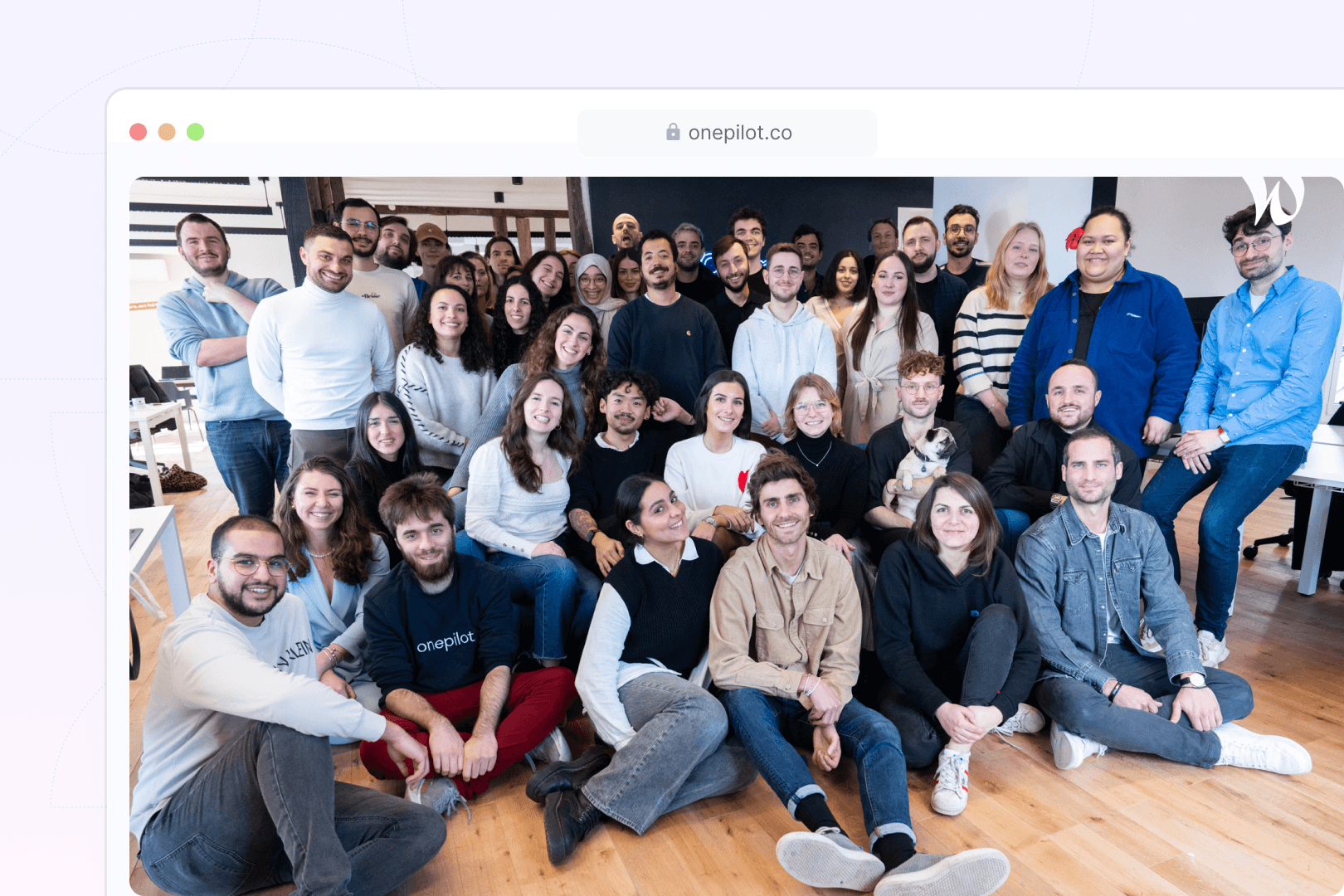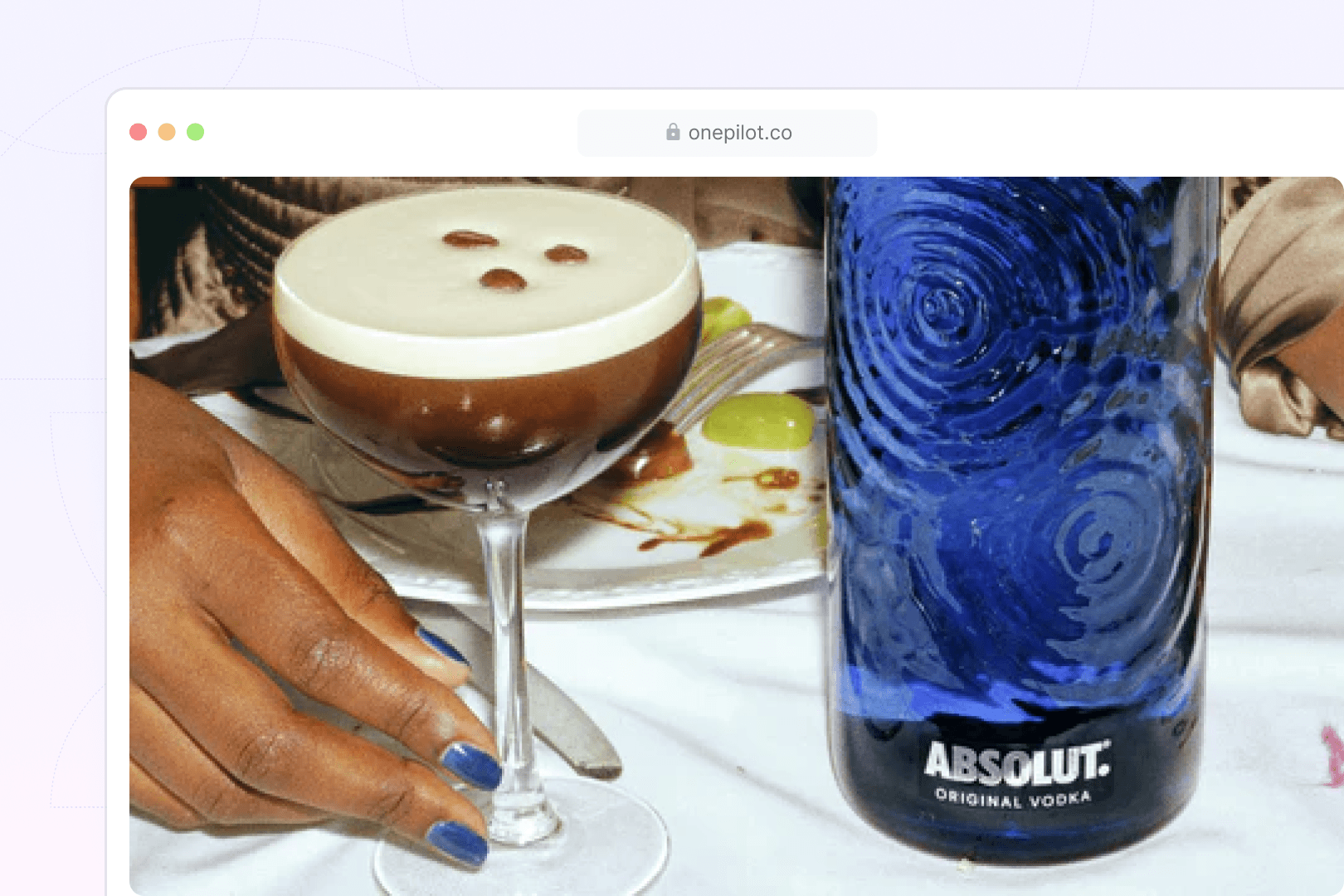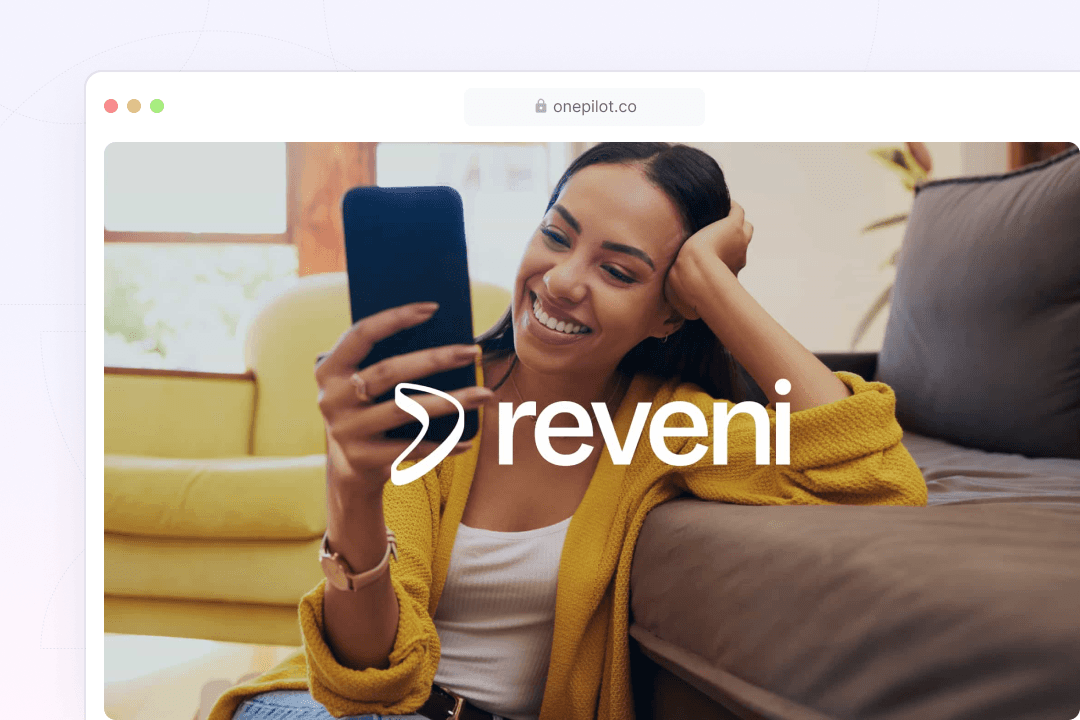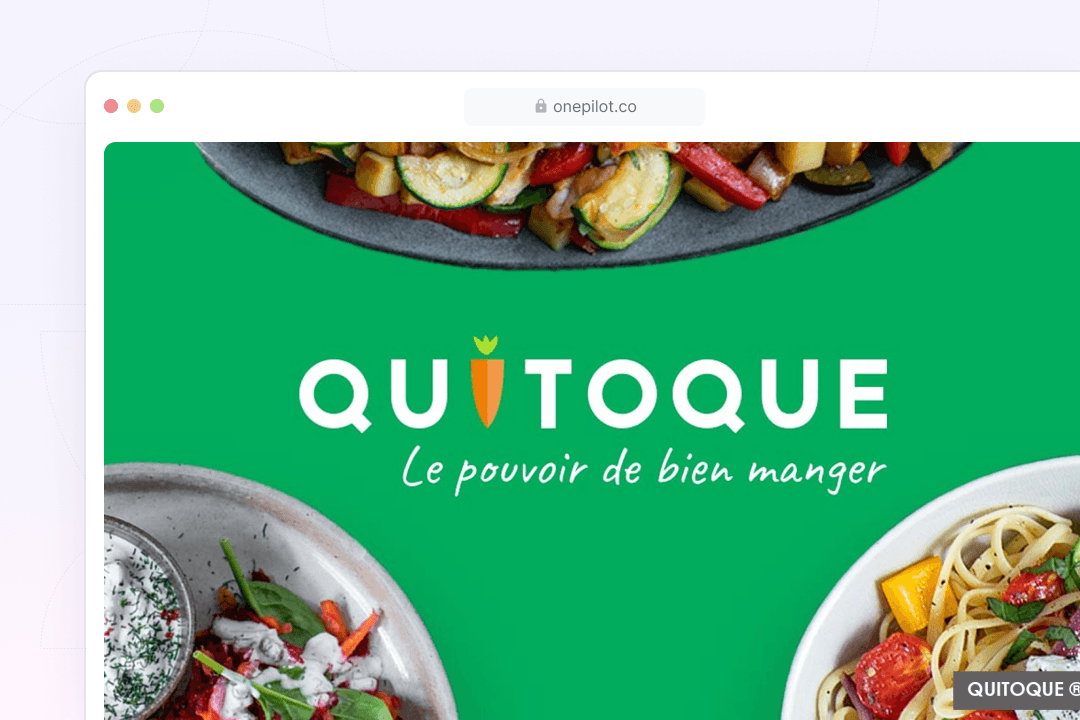Onepilot News
August 30, 2023
Last summer we celebrated €2M ARR for our first birthday. For our second anniversary, we did 5x and reached €10M ARR.
Most important is that we strengthened the foundations that will allow us to build a tech category leader in the outsourcing space.
Our competitors still do 100x more with hundreds of thousands of people around the world so this is only the very beginning but what we tried to do in this article is to introduce some of our past year’s main insights, learnings and challenges.
Hope this could help to know more about Onepilot, maybe join us (we are hiring here 👋), book a demo to fire up your customer service (demo here 👋), take a step back about your company or just enjoy reading it ☀️
Context
We launched Onepilot in 2021 with a double observation:
Online customer requests (via email, chat, or phone) have exploded over the past 20 years and brands can’t manage all of them internally (non-operating hours, staffing costs, variable volumes...)
The technological tools used are very fragmented and quite inefficient, making the customer support profession manual and expensive.
The idea was therefore to provide e-merchant brands with 24/7 available, responsive customer support agents and a technology that makes agents’ work as simple as possible.
We wanted to improve how customer care outsourcing is done, meaning: improve quality, decrease costs thanks to technology and offer a more flexible model with a better experience for our customers.
To test it, there was nothing better than getting our first customers onboard and starting by answering their tickets by ourselves. No tech, no extensive knowledge of the industry but a lot of learnings about the way the customer support agent position could be improved.
Moving fast forward. Within 2 years, 200 clients (e-commerce, mobility, bank, insurance) trusted us to reach €10M in annual revenue with a team of 65 Pilots and 1,200 heroes in 16 countries.

What changed in the last 12 months
1️. From 4 to 20 engineers: structuring a tech team to scale the right way
During the first year of Onepilot the tech team was made of 4 people focused on the core features and to be as fast as possible. This means no process, no code review, everyone full stack and working alone on his feature. We saved a lot of time by using as much "pre-made" tech as possible (i.e. dashboard templates, open-source libraries, etc.).
This allowed us to build the key features for our business model to run:
User management
Customer & Agent timetable scheduling
Billing & Invoices
Quality Control
Basic Knowledge Base edition
A first step but not enough yet to create a differentiating tech asset and validate our bet: offering competitive pricing vs. offshoring with native agents empowered with our tech.
Over the past year, we scaled the tech team from 4 to 20 engineers and our day-to-day focus has dramatically changed:
We built our Product team, and it made a major difference in the way we work. Projects are meticulously scoped and evaluated in terms of impact and value. Developers can focus on their code and on tech challenges more than on feature prioritization or business impact
We introduced an organization by specialized Squads of 3 or 4 developers including (i) a Lead that is responsible for the project's global management and delivery and (ii) some Experts that are developers that have the same career evolution plan as Leads but are more focused on expertise and code quality/delivery
Set up our culture and processes: following Agile principles, code reviewing each other, setting up some devops workflows, KPIs and OKRs for everyone...
We started working on AI and ML features with the goal of speeding up and someday fully automating the tasks that Onepilot heroes do every day.
Finally, our need to ship features at maximum speed has reduced a bit, and the need for our platform to be stable and future-proof has increased.
This allowed us to develop over the past year many features to empower Heroes with more comfort and productivity: each second won has a significant impact on revenue: shortcuts, AI suggestions, integrations, regex and deep links, new knowledge base editor, smart routing rules, everything we ship must have an impact.
Today, we start seeing positive upside, Onepilot heroes are more efficient with our tools than without, and heroes are almost always guaranteed to receive tickets for full utilisation thanks to our routing rules.
This evolution and this arbitrage between velocity and code quality is quite frequent in all tech projects and we believe that this is a challenge that can be addressed by educating the all team on the necessity to build strong foundations, but also on some tech realities like the fact that as the project grows there will always be more and more unexpected issues, release will take more time and that scalability of a tech team can’t be perfectly linear.
2. From €24k to €120k annual Average Revenue Per Account (ARPA): constantly adapting the way we sell Onepilot
Ex-outsourced customer care clients, we were unsatisfied with the state of the art of the industry. Yes, we humbly aimed to dust it off. Still, we did not have any intensive knowledge of its legacy practices.
Not having bias encouraged us to pitch a radically different offering. No commitment, full flexibility, full transparency, native agents and per ticket pricing.
This was key in the construction of our go to market because it was very relevant for young companies that were not used to the way traditional competitors work and found out that our approach was modern and aligned with their DNA.
It resulted in (i) almost 100 companies signed in the first year with a quite low ARPA but so much feedback and love from our customers that (ii) helped us to build a bulletproof technology.
With only 3 sales we initially adopted a “full stack” strategy to maximise our sales efficiency by running prospection and closing at the same time. Leveraging our initial use cases was also key to creating a “snowball effect” and getting referrals from our first clients (our best ambassadors).
This led us to have a clear vision of:
Our initial ICP: e-commerce, marketplace and mobility operators
Our buying personas: customer care and e-commerce manager
USPs that would unlock them: CSAT maximisation, First Response Time diminution, cost decrease, LTV optimisation, internal customer care teams NPS enhancements….
We relied mostly on the Meddic matrix and made the choice of investing time and resources in building a best-in-class CRM (kudos to Hubspot), enabling us to scale fast and make strategic data-related decisions.
Once our ICP was validated, the past year's challenges were to:
Establish a strong partnership strategy with a limited number of aligned interests partners: ticketing tool operators and/or other e-merchants solution providers that now drive 50% of our acquisition
Grow our international footprint by expanding to the UK and Germany with local operations and thus unlocking larger accounts that had specific language requirements. We are now operating in 9 languages with agents from 16 different countries
Switch to a specialised Sales team organization with a team of 12 people divided into large tenders specialists, partnerships managers, outbound masters or growth managers. Each stream aims to maximize the efficiency of our prospection to decrease our overall cost of acquisition
Thanks to these iterations in the way we organize our Sales we managed over the past year to move slightly upmarket and to do x2 on our client’s count but more than x5 on our revenue.
3. From sourcing a few agents per month to managing thousands of heroes: building our Ops Efficiency
In our first year as we started getting more customers onboard and our first agents, we tested different pricing models and ways to operate.
In terms of pricing models, we tried everything from fixed subscription to pay-by-hour model, but after researching and testing, we realised that the most transparent way to price was pay per use so we decided to maintain our initial model with some fine tuning on pricing.
In terms of operations, as we started to scale, we also tested different ways to operate: working with local freelancers, using existing freelancer platforms, hiring in-house teams etc.
The most important success factors were:
Scalability or how fast we can onboard agents
Flexibility for the agents and our customers
Quality we could deliver
Efficiency and most importantly
Impact, where we always wanted to have a positive impact by paying agents top of the market, which, in retrospect also allowed us to partner with some of the most talented freelancers in the market.
After testing different solutions, we came to the conclusion that partnering with freelancers was the best way to achieve all this as we quickly found out there is a large pool of freelancers, lacking customers and looking for new gigs as well as the possibility to diversify their activity.
By offering them the opportunity to work anytime from anywhere, on any customers with a competitive pay, allowed us to attract a large volume of freelancers, or what we call our Heroes.
Word of mouth started doing its magic and we received hundreds of Heroes applications, so we started to build a semi-automated application funnel, with different interactive tests and training modules to identify the best freelancers and make it more scalable on the ops side.
As supply acquisition was secured, the past 12 months were focused on structuring our ops to maximize efficiency regarding customer onboarding and management.
After a few roles reorganisation, we decided to set up an efficient model, with two key roles:
Operations Managers have a similar role to Account Managers at traditional BPOs
Operations Associates manage daily operations.
We also shipped features to allow ops team to save a lot of time in their daily operations, with an intelligent quality control system, three levels tickets escalation system, almost fully automated training with our in-house learning centre, world-class knowledge base with our onboarding templates (often called our “secret sauce” by our customers), smart scheduling system and ticket routing rules allowing to identify and eliminate backlogs almost in real time, and many more tech layers empowering us with high efficiency.
This allows one Onepilot ops team member to efficiently do the same work that 4 to 5 people would do at traditional BPOs (from some of our customer's examples), and has great benefits: less workload and pressure for our team who can focus on higher impact tasks, cheaper operations for our customers and a more lean team at Onepilot. This is also how we manage to achieve margins getting closer to SaaS businesses than traditional BPOs.
4. From 30 to 65 Pilots in the team: keep ensuring our vision to build a great place to work with a unique culture
At Onepilot we have always been convinced that culture is a key differentiator. Culture is not easy to define but we like the definition of what orients our actions when nobody is looking. It orients them in a common way that satisfies Onepilot collective mission and each Pilot legit expectations.
Company culture is at the core of everything because our vision is to create a market leader in the outsourcing space but also to build a great place to work for our team.
That’s why we defined very early on our values and principles:
Lead by example: have a preference for action. Each Pilot acts as if he expects other people to act
Keep pushing to get results: have great ambitions and deliver measurable resultsCare, Act fairly: we do the right thing for Onepilot and care for our team
Be passionate, Have fun: love the team, the mission, or the product (preferably the three of them!)
Take ownership: we are curious. We take initiative and hold ourselves accountable for what we do
That being said having a culture playbook and other manifestos is important to underline how culture is important to us but it is nothing without constant monitoring and daily actions.
Over the past year, we implemented NPS surveys in the team, transparent progression plans, backlog 0 policy and clear and constructive policy for applicants… And there is still much to do to ensure that our culture lives and evolves so we keep pushing on that topic!
What's next?
Now that the €10m ARR target is behind us, we are heading towards the €100m target.
This will require work and focus to deliver the best experience to our customers and Heroes but more importantly, to keep the vision and values that we built along the way.
Massive thanks to each amazing Pilot, Hero, client, investor, or partner who helps us to build the story. This is only the beginning.
As we like to say at Onepilot, let's keep pushing!
Onepilot team ❤️
Stay informed with the latest guides and news.




